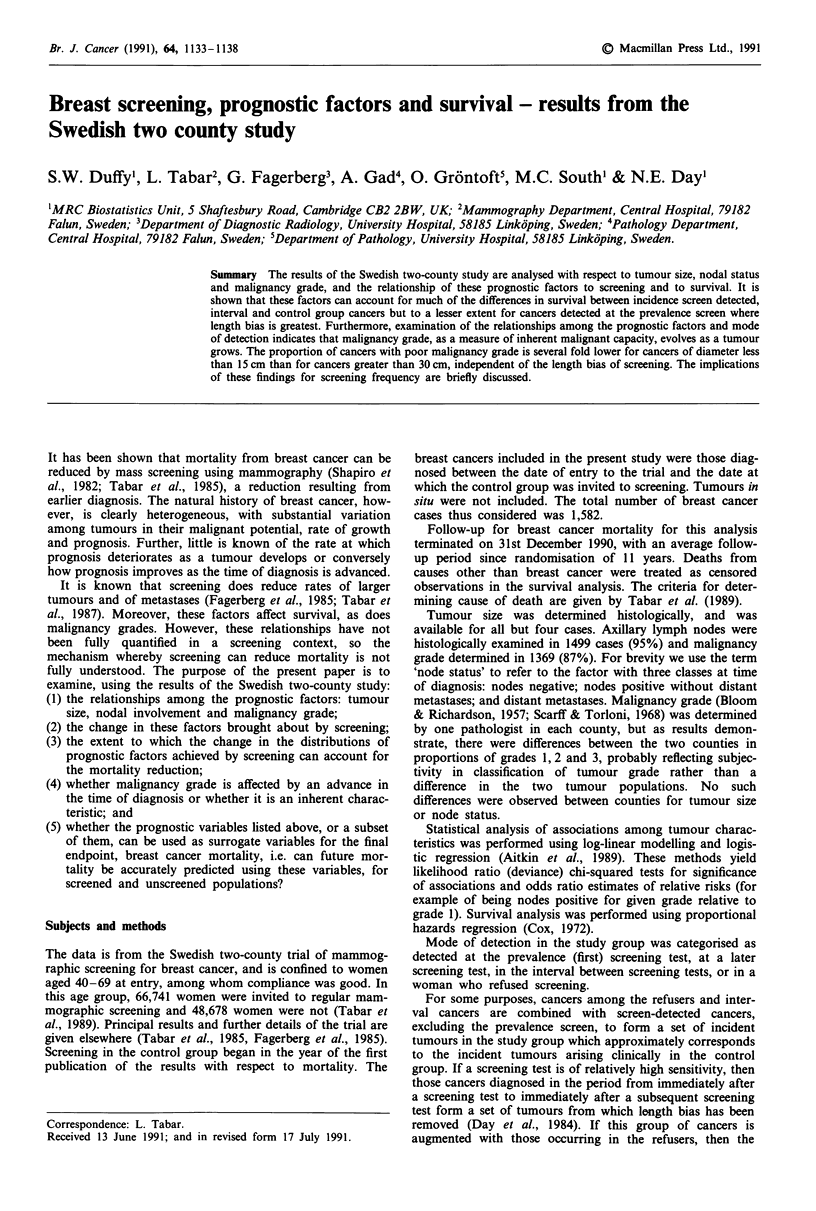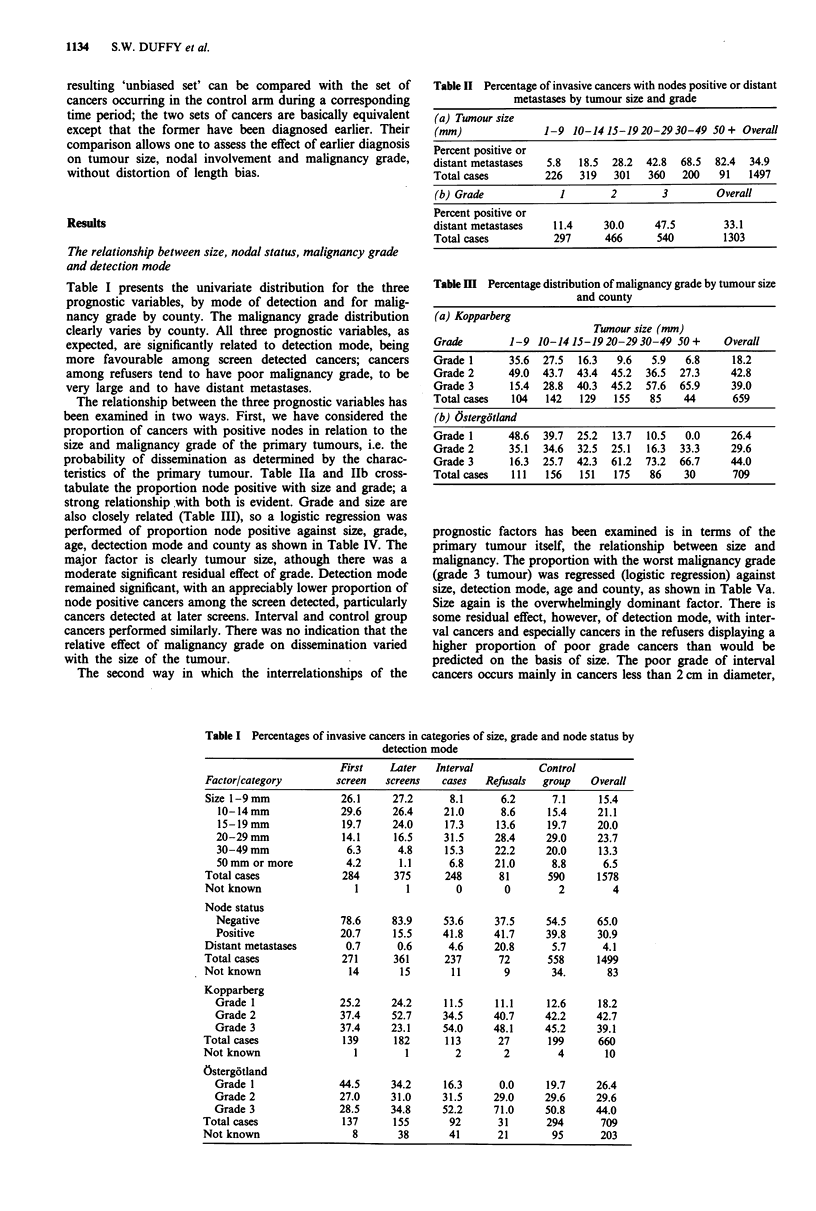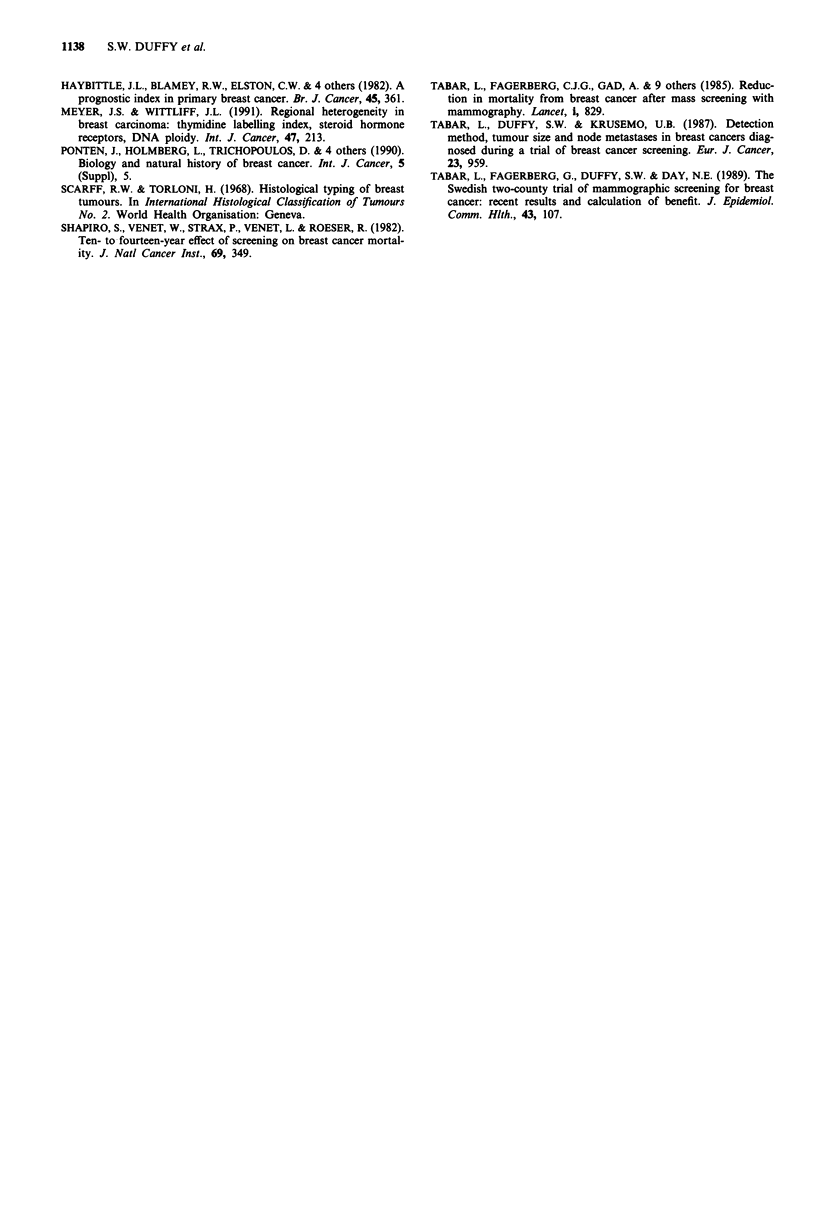Abstract
The results of the Swedish two-county study are analysed with respect to tumour size, nodal status and malignancy grade, and the relationship of these prognostic factors to screening and to survival. It is shown that these factors can account for much of the differences in survival between incidence screen detected, interval and control group cancers but to a lesser extent for cancers detected at the prevalence screen where length bias is greatest. Furthermore, examination of the relationships among the prognostic factors and mode of detection indicates that malignancy grade, as a measure of inherent malignant capacity, evolves as a tumour grows. The proportion of cancers with poor malignancy grade is several fold lower for cancers of diameter less than 15 cm than for cancers greater than 30 cm, independent of the length bias of screening. The implications of these findings for screening frequency are briefly discussed.
Full text
PDF





Selected References
These references are in PubMed. This may not be the complete list of references from this article.
- BLOOM H. J., RICHARDSON W. W. Histological grading and prognosis in breast cancer; a study of 1409 cases of which 359 have been followed for 15 years. Br J Cancer. 1957 Sep;11(3):359–377. doi: 10.1038/bjc.1957.43. [DOI] [PMC free article] [PubMed] [Google Scholar]
- Fagerberg G., Baldetorp L., Gröntoft O., Lundström B., Månson J. C., Nordenskjöld B. Effects of repeated mammographic screening on breast cancer stage distribution. Results from a randomised study of 92 934 women in a Swedish county. Acta Radiol Oncol. 1985 Nov-Dec;24(6):465–473. doi: 10.3109/02841868509134418. [DOI] [PubMed] [Google Scholar]
- Haybittle J. L., Blamey R. W., Elston C. W., Johnson J., Doyle P. J., Campbell F. C., Nicholson R. I., Griffiths K. A prognostic index in primary breast cancer. Br J Cancer. 1982 Mar;45(3):361–366. doi: 10.1038/bjc.1982.62. [DOI] [PMC free article] [PubMed] [Google Scholar]
- Meyer J. S., Wittliff J. L. Regional heterogeneity in breast carcinoma: thymidine labelling index, steroid hormone receptors, DNA ploidy. Int J Cancer. 1991 Jan 21;47(2):213–220. doi: 10.1002/ijc.2910470209. [DOI] [PubMed] [Google Scholar]
- Shapiro S., Venet W., Strax P., Venet L., Roeser R. Ten- to fourteen-year effect of screening on breast cancer mortality. J Natl Cancer Inst. 1982 Aug;69(2):349–355. [PubMed] [Google Scholar]
- Tabar L., Duffy S. W., Krusemo U. B. Detection method, tumour size and node metastases in breast cancers diagnosed during a trial of breast cancer screening. Eur J Cancer Clin Oncol. 1987 Jul;23(7):959–962. doi: 10.1016/0277-5379(87)90341-5. [DOI] [PubMed] [Google Scholar]
- Tabar L., Fagerberg G., Duffy S. W., Day N. E. The Swedish two county trial of mammographic screening for breast cancer: recent results and calculation of benefit. J Epidemiol Community Health. 1989 Jun;43(2):107–114. doi: 10.1136/jech.43.2.107. [DOI] [PMC free article] [PubMed] [Google Scholar]
- Tabár L., Fagerberg C. J., Gad A., Baldetorp L., Holmberg L. H., Gröntoft O., Ljungquist U., Lundström B., Månson J. C., Eklund G. Reduction in mortality from breast cancer after mass screening with mammography. Randomised trial from the Breast Cancer Screening Working Group of the Swedish National Board of Health and Welfare. Lancet. 1985 Apr 13;1(8433):829–832. doi: 10.1016/s0140-6736(85)92204-4. [DOI] [PubMed] [Google Scholar]


